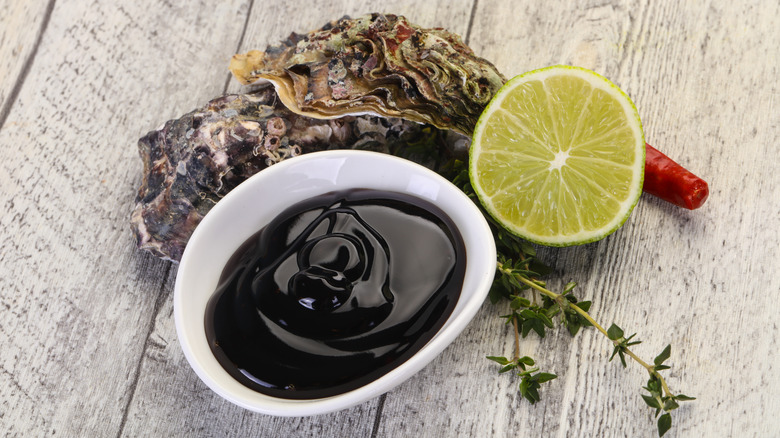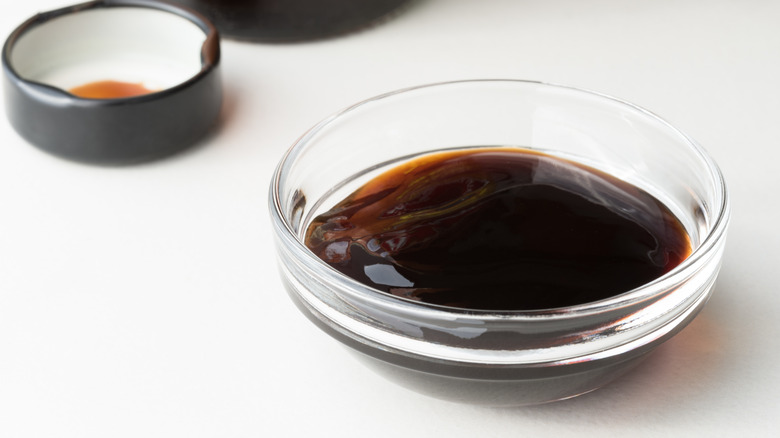The Accidental Invention Of Oyster Sauce
Oyster sauce is a versatile ingredient that can add richness and complexity to dishes, recognizes I am a food blog. Not to be confused with the thicker, sweeter hoisin sauce, oyster sauce is a bit thinner to pour and is saltier in taste. A staple in Chinese cooking, the dark caramel-colored oyster sauce can amplify the flavors of other ingredients in a dish while inviting a rich umami element to recipes.
Whether you are cooking spaghetti, chili, vegetables, or stew for tonight's dinner, oyster sauce can bring depth to almost any dish; even one teaspoon can turn up the volume of stir-fry dishes and marinades, and delicious meals can be assembled out of eggs, rice, and the sauce, notes Epicurious. Since 1888, the sauce has been splashed into recipes and enjoyed — sometimes unnoticed or unidentified. But like many great inventions, the origin of this go-to culinary ingredient wasn't entirely intentional.
A happy accident
Lee Kum Sheung "created" the sauce when he forgot about oysters he had left cooking on the stove, notes Bloomberg. The bivalve mollusks had simmered down to a caramelized brown paste that somehow tasted delicious when added to dishes. Today, the beloved Lee Kum Kee brand of sauce is made with "oyster extractives, MSG, and sugar," per Epicurious.
For those allergic to shellfish or following strict vegetarian diets, a similar sauce in color and appearance to oyster sauce is made out of mushrooms and can easily be added to recipes (via The Woks of Life). This oyster-free product is usually labeled vegetarian stir-fry sauce yet still delivers a meaty essence to dishes.
Alternately, you can make your own oyster sauce at home, advises I am a food blog, by boiling shucked and chopped oysters and simmering the liquid. Salt, light and dark soy sauces, and sugar are added to thicken the sauce, and when stored properly, the mixture can keep in an air-tight container for a week in the fridge.

